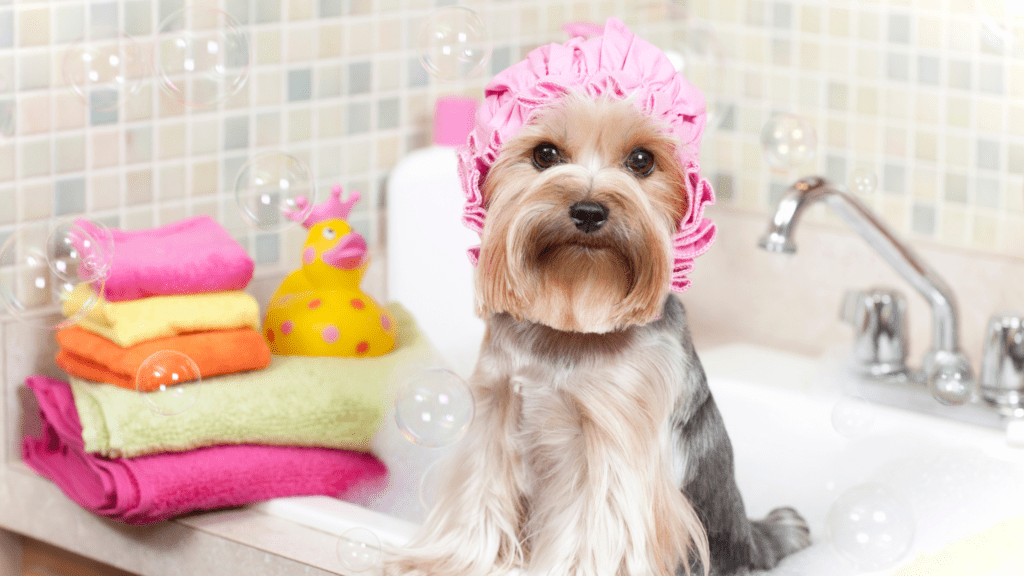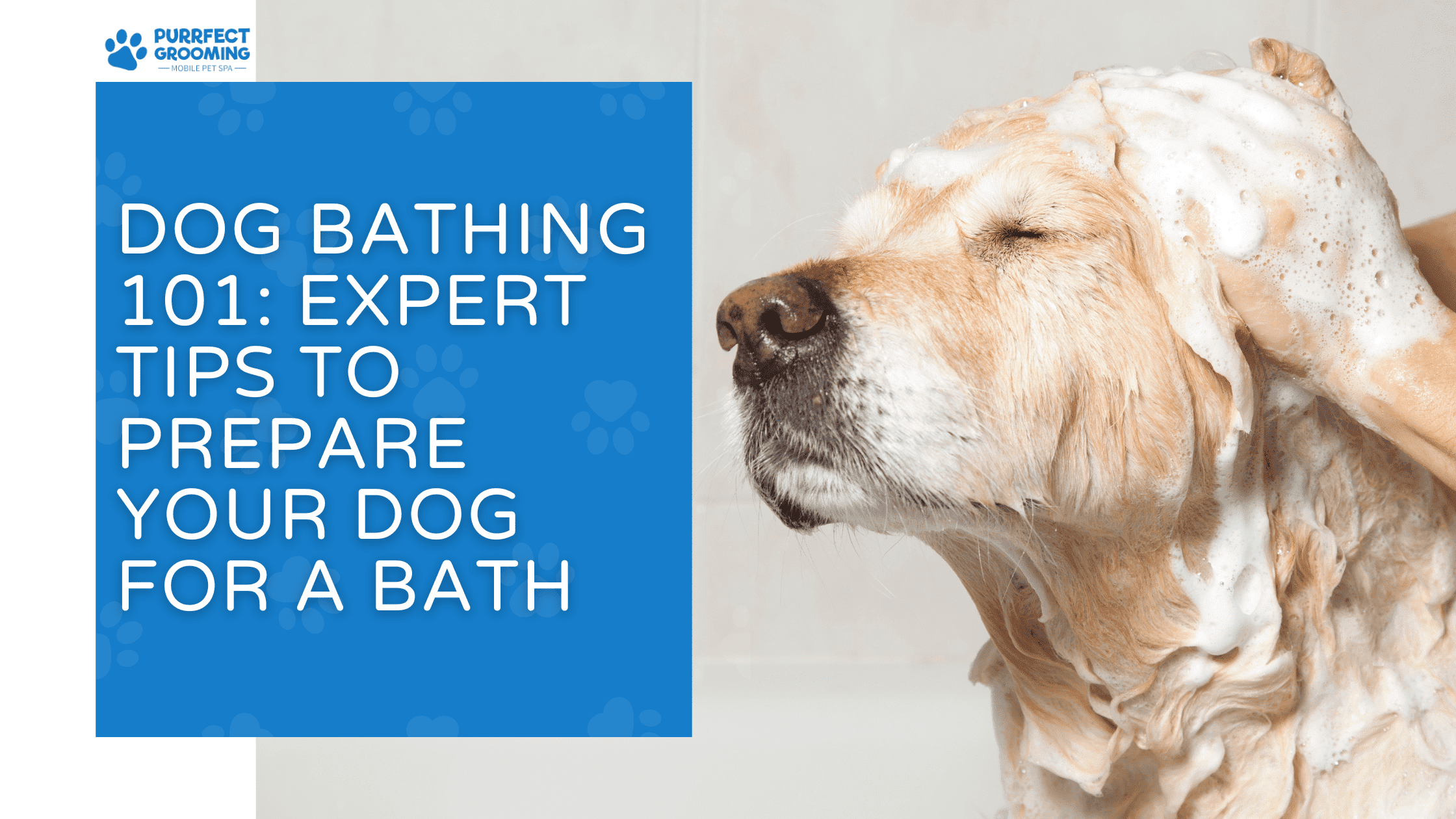Dog Bathing 101: Expert Tips to Prepare Your Dog for a Bath
Giving your dog a bath doesn’t have to be stressful. With the right approach, you can make it an enjoyable experience for both you and your pet. Whether it’s your first time bathing your dog or you’re looking to refine your process, this detailed guide will cover everything you need to know about preparing for a dog bath.Bathing your dog is essential for keeping their coat and skin healthy. Regular dog baths help remove dirt, excess oils, and parasites that can harm your dog. The key to a successful dog bath lies in preparation and using the right tools and techniques. Let’s get started!
Preparing for a Dog Bath
Gather the Right Tools for a Dog Bath
Before starting the bath, make sure you have everything ready:
| Tool | Purpose |
| Dog-safe shampoo | Cleanses the coat without irritating the skin |
| Towels | Dries the dog after the bath |
| Brush | Removes loose fur and tangles before the bath |
| Cotton balls | Protects your dog’s ears from water |
| Non-slip mat | Prevents your dog from slipping in the tub |
Having these items on hand will make the process smoother and less stressful for you and your dog.
Choose the Right Location for a Dog Bath
Selecting the right location for your dog’s bath is crucial. You can bathe your dog in the sink, bathtub, or outdoors, depending on their size and temperament.
Indoor vs. Outdoor Dog Bathing
Indoor baths are ideal for smaller dogs, especially in cold weather, while outdoor baths can work well for larger dogs during warmer months. Make sure the area is safe and free from distractions.
Brushing Your Dog Before the Dog Bath
Before you get your dog wet, brush them thoroughly. Brushing helps to remove tangles, mats, and loose fur, making the dog bath more effective.
Types of Dog Shampoos and Conditioners
Just like humans, dogs have different skin types—some may have dry skin, while others might have oily or sensitive skin. Knowing your dog’s skin type helps you choose the right shampoo and conditioner for their dog bath.
Selecting a Dog-Safe Shampoo for the Dog Bath
Always choose a shampoo specifically designed for dogs. Human shampoos can disrupt your dog’s skin pH balance, leading to irritation. If your dog has sensitive skin, look for hypoallergenic shampoos.
You May Also Like : Can You Use Human Shampoo on Dogs?
The Pre-Dog Bath Routine
Calming Your Dog Before the Dog Bath
If your dog gets anxious around bath time, try calming them down before starting. You can use soothing words, gentle strokes, or even give them a treat to create positive associations with the bath.
Protecting Your Dog’s Ears During the Bath
It’s important to protect your dog’s ears from water during a bath. Insert cotton balls gently into their ears to prevent water from entering, but be sure not to push them in too far.
Ensuring Water Temperature is Just Right
Water that’s too hot or too cold can make your dog uncomfortable during the bath. The ideal water temperature should be lukewarm, ensuring a comfortable and enjoyable bath experience for your dog.
Step-by-Step Guide to Dog Bathing
Wetting Your Dog Thoroughly
The first step in any dog bath is to wet your dog’s fur completely. This helps loosen dirt and makes it easier to apply shampoo. Make sure to wet them from head to tail.
Applying the Dog Shampoo During the Bath
Squeeze a small amount of dog shampoo onto your hands and lather it between your palms. Gently apply the shampoo to your dog’s coat, avoiding the eyes and ears.
| Step | Action |
| Wetting the dog | Start from the neck and work your way down |
| Applying shampoo | Use gentle, circular motions to massage the shampoo |
| Rinsing | Rinse thoroughly until the water runs clear |
| Applying conditioner | Optional but helpful for long-haired breeds |

Rinsing the Shampoo Properly
Rinse thoroughly to remove all the shampoo from your dog’s coat. Leftover shampoo can cause itching and irritation, so take your time to ensure your dog is completely rinsed.
Using a Conditioner (Optional)
Using a conditioner can help soften your dog’s fur and make post-bath brushing easier. It’s especially useful for dogs with long or curly coats. Apply the conditioner just like you would the shampoo, then rinse thoroughly.
Post-Dog Bath Care
Drying Your Dog After the Bath
Once your dog’s bath is complete, it’s time to dry them off.
Towel Drying vs. Blow Drying
For short-haired dogs, towel drying is usually enough. For long-haired dogs, a blow dryer on a cool, low setting can help speed up the process. Make sure to avoid high heat, as it can irritate your dog’s skin.
Post-Bath Brushing
After drying your dog, give their coat a good brush to remove any tangles and loose fur. Brushing after a bath also helps keep their coat shiny and healthy.
Bathing Frequency for Different Breeds
Different dog breeds have varying bathing needs. For example, Basset Hounds, with their oily skin, may require more frequent baths, while breeds like Huskies, with their double coat, only need occasional bathing.
Common Mistakes to Avoid During Dog Bathing
Using Human Shampoo
Human shampoos are not formulated for a dog’s sensitive skin. Always use dog-specific shampoos to avoid causing irritation.
Not Rinsing Thoroughly
Failing to rinse your dog completely can leave behind residue that irritates their skin. Make sure to rinse your dog thoroughly during the bath, especially in hard-to-reach areas like under the belly.
Bath Time Tips for Anxious Dogs
Making Bath Time Fun
Turn bath time into a positive experience by incorporating toys or using treats as a reward for good behavior.
Using Treats as Motivation
Treats can be a great motivator for dogs who are anxious about bathing. Give your dog a treat before, during, and after the bath to keep them calm and cooperative.
You May Also Read : Ultimate Pet Bathing Guide
Creating a Safe Bathing Environment
Non-Slip Surfaces for Dog Bathing
Dogs can easily slip and panic during a bath. A non-slip mat provides stability, making the bath more comfortable for your dog.
Keeping the Dog Bath Short and Sweet
While you want to be thorough, it’s also important to keep the bath short and sweet. This reduces the chances of your dog becoming stressed or anxious.
Aftercare: Checking for Skin Irritations Post-Bath
After the bath, check your dog’s skin for any signs of irritation, such as redness or bumps. If you notice anything unusual, consult your veterinarian for advice.
Conclusion: Making Dog Bathing a Positive Experience
Dog bathing doesn’t have to be a difficult task. With the right preparation, tools, and techniques, you can turn it into a positive bonding experience with your furry friend. Remember to stay calm, use gentle techniques, and reward your dog for their cooperation. Over time, bath time can become something both you and your dog look forward to!
FAQs
1. How often should I bathe my dog?
The frequency depends on your dog’s breed and activity level. Some dogs need a bath every few weeks, while others can go longer.
2. Can I use human shampoo on my dog?
No, human shampoos can disrupt your dog’s skin balance and cause irritation. Always use dog-safe products.
3. What if my dog is scared of water?
If your dog is scared of water, use positive reinforcement like treats and toys, and take things slow. Gradually introduce them to the bath process.
4. How can I get rid of the wet dog smell?
Using a dog-safe deodorizing shampoo can help reduce the wet dog smell. Additionally, make sure your dog is dried thoroughly after the bath.
5. Is it necessary to use conditioner on my dog?
Conditioner is optional but recommended for dogs with long or curly coats to help detangle and soften their fur.
